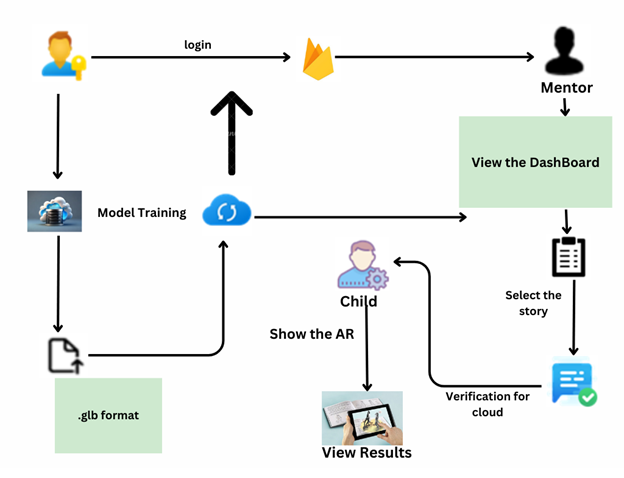Aim:
The goal of this project is to develop an AR (Augmented Reality) Interactive Storytelling system for children’s books. The primary aim is to create an engaging and educational experience that immerses children into the story through visual and interactive elements, making the reading experience more enjoyable and educational.
Abstract:
This paper proposes a system that integrates augmented reality (AR) into the storytelling process to transform traditional books into interactive and immersive experiences for children. By overlaying visual and auditory stimuli onto physical books, the system enhances engagement and encourages repeated interaction. The novelty and interactivity provided by AR aim to sustain children’s interest over time, offering varied experiences with each reading and thereby increasing the replay value compared to conventional static books.
Existing System:
Is a traditional format for storytelling in children’s books. In this format, the narrative is presented in linear text form with occasional illustrations to accompany the story. It primarily relies on the child’s imagination to bring the story to life.
Disadvantages:
1. Limited Engagement: Children may get easily distracted while reading, as text-based stories don’t provide much interaction or engagement.
2. Limited Visual Appeal: While illustrations can enhance the story, they are static and don’t provide dynamic or immersive interaction.
3. Difficulty in Retention: Children, especially younger ones, might find it difficult to remember
4. Passive Learning Experience: The experience is largely passive, with children simply reading or being read to, rather than actively participating in or contributing to the story
Proposed System:
In the proposed system, augmented reality (AR) will be integrated with the storytelling process, transforming traditional books into interactive and immersive experiences. The system will be designed to allow children to interact with the book using AR, adding layers of visual and auditory stimuli to engage children more deeply in the content. The novelty and interactivity of AR could make the book more exciting for children to return to again and again, unlike static books that children may quickly lose interest in. AR-based books could offer different experiences upon multiple readings, increasing their replay value.
Advantages:
1. Increased Engagement and Immersion: With AR, children can interact with the characters, objects, and scenes from the book
2. AR can adapt based on the child’s preferences or reading level, allowing for customized experiences
3. The interactive elements can help children understand complex ideas or narratives better.
4. Different children have different learning preferences. Some children are more visual learners, while others might be auditory or kinesthetic learners.
5. AR storytelling can incorporate all these learning styles to help a wider range of children





















Reviews
There are no reviews yet.